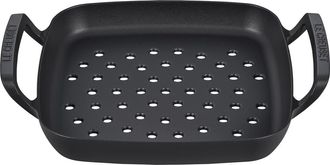Umbrella Stands
Umbrella Stands

-20%
Ballard Designs
Rectangular Patio Umbrella - Canvas Cornflower Sunbrella, Black - Ballard Designs Blue
$599.20
$749.00
Ballard Designs
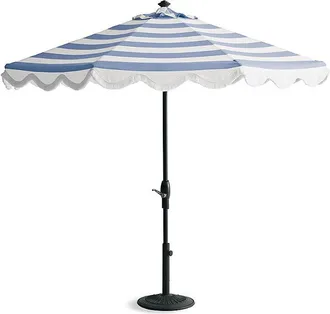
-25%
Frontgate
9 Round Designer Umbrella - Resort Stripe Air Blue, Weathered Teak - Frontgate Resort Collection
$1,311.75
$1,749.00
Frontgate

-20%
Ballard Designs
Limited Edition Cece Patio Umbrella - Ballard Designs
$959.20
$1,199.00
Ballard Designs

-25%
Frontgate
30 lb. Add-on Weight for Umbrella Base - Frontgate
$89.25
$119.00
Frontgate

-60%
Ballard Designs
7.5 Round Patio Umbrella Replacement Canopy - Canvas Navy - Ballard Designs Dark Blue
$99.19
$249.00
Ballard Designs

-25%
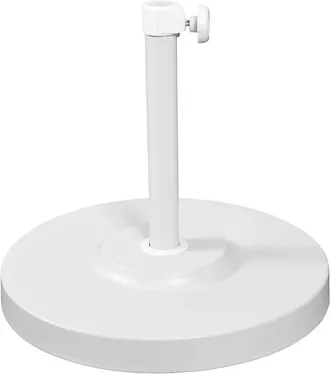
-20%
Ballard Designs
Pacific Pagoda 50 lb. Patio Umbrella Base - Ballard Designs
$143.20
$179.00
Ballard Designs

Dr. Vranjes
Bellini Glass Bottle Collection Fragrance, 17 oz
$162.00
Bergdorf Goodman

-30%
Ballard Designs
11 Patio Umbrella Replacement Canopy - Canopy Stripe Black/Sand Sunbrella - Ballard Designs
$279.30
$399.00
Ballard Designs

-30%
Frontgate
Poolside Cantilever Umbrella - Milano Cobalt Stripe - Frontgate Blue
$839.30
$1,199.00
Frontgate

-60%
Ballard Designs
7.5 Round Patio Umbrella Replacement Canopy - Canvas Spa - Ballard Designs
$99.19
$249.00
Ballard Designs

Dr. Vranjes
Bellini Glass Bottle Collection Fragrance, 8.5 oz
$108.00
Bergdorf Goodman

-20%
Ballard Designs
Rectangular Patio Umbrella - Canvas Spa Sunbrella, Bronze - Ballard Designs Copper
$599.20
$749.00
Ballard Designs

-25%
Frontgate
9 ft. Round Contrast Border Umbrella - Black, Endura Teak - Frontgate Blue
$824.25
$1,099.00
Frontgate

-30%
Ballard Designs
9 Patio Umbrella Replacement Canopy - Canopy Stripe Cornflower/White Sunbrella - Ballard Designs
$223.30
$319.00
Ballard Designs

-25%
Frontgate
Azura Handpainted Umbrella Table - Frontgate
$674.25
$899.00
Frontgate

-30%
Ballard Designs
9 Patio Umbrella Replacement Canopy - Canvas Spa Sunbrella - Ballard Designs
$209.30
$299.00
Ballard Designs

-25%
Frontgate
Sirocco Umbrella Table - Frontgate
$396.75
$529.00
Frontgate

-30%
Ballard Designs
11 Patio Umbrella Replacement Canopy - Canvas Spa Sunbrella - Ballard Designs
$265.30
$379.00
Ballard Designs

-25%
Frontgate
Palermo Umbrella Table in Bronze Wicker - Frontgate
$824.25
$1,099.00
Frontgate

-30%
Ballard Designs
9 Patio Umbrella Replacement Canopy - Canopy Stripe Black & Sand Sunbrella - Ballard Designs
$223.30
$319.00
Ballard Designs

-25%
Frontgate
9 Color Blocked Designer Umbrella in Glacier - Weathered Teak - Frontgate
$899.97
$1,199.00
Frontgate

-30%
Ballard Designs
Outdoor Patio Umbrella Cover - 65 - Ballard Designs
$62.30
$89.00
Ballard Designs
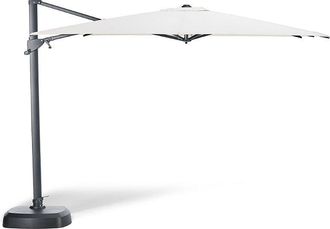
-25%
Frontgate
10 Square Side Mount Umbrella with Base - Frontgate
$974.25
$1,299.00
Frontgate

-54%
Ballard Designs
Patio Umbrella Light with Bluetooth Speaker - Ballard Designs
$91.19
$199.00
Ballard Designs

-20%
Sunnydaze
Offset Patio Umbrella & Cantilever W/ Cross Base With $14 Credit Orange
$144.99
$180.99
Rue La La

-60%
Ballard Designs
7.5 Round Patio Umbrella Replacement Canopy - Canvas Fawn - Ballard Designs
$99.19
$249.00
Ballard Designs
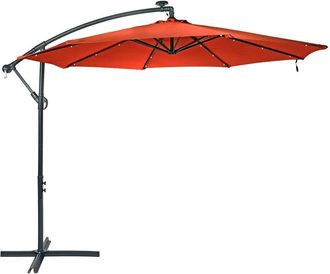
-20%
Sunnydaze
Burnt Orange 10 Outdoor Offset
$159.99
$198.99
Rue La La

-60%
Ballard Designs
7.5 Round Patio Umbrella - Canvas Fawn - Ballard Designs
$178.39
$449.00
Ballard Designs

-25%
Frontgate
Altura LED Cantilever Umbrella with Base - 13 Square - Frontgate
$2,774.25
$3,699.00
Frontgate

-12%
Ballard Designs
Lennox Chair - Ballard Designs
$791.94
$899.00
Ballard Designs

-64%
Frontgate
Double-Tier Designer Umbrella - Natural with Air Blue trim - Frontgate
$713.97
$1,999.00
Frontgate

-60%
Ballard Designs
7.5 Round Patio Umbrella - Canvas Fern - Ballard Designs Green
$178.39
$449.00
Ballard Designs

-25%
Frontgate
50-lb. Umbrella Base, Belmont - Bronze - Frontgate Copper
$134.25
$179.00
Frontgate

-20%
Ballard Designs
Rectangular Patio Umbrella - Canvas Fawn, Bronze - Ballard Designs Copper
$599.20
$749.00
Ballard Designs
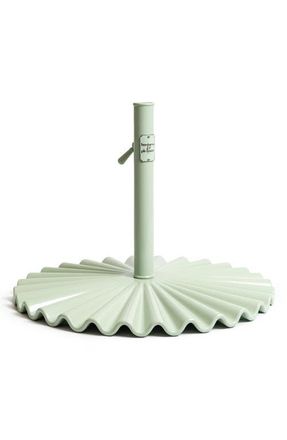

-60%
Ballard Designs
7.5 Round Patio Umbrella - Canvas Spa - Ballard Designs
$178.39
$449.00
Ballard Designs
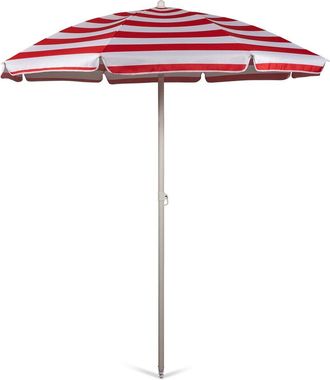
-33%
Oniva
Dnu Oniva 5.5Ft Portable Beach Umbrella
$34.99
$52.00
Rue La La

-20%
Ballard Designs
Patio Umbrella Stand - Black - Ballard Designs
$183.20
$229.00
Ballard Designs

-33%
Oniva
Dnu Oniva 5.5Ft Portable Beach Umbrella
$34.99
$52.00
Rue La La

-30%
Ballard Designs
9 Patio Umbrella Replacement Canopy - Canvas Black Sunbrella - Ballard Designs
$209.30
$299.00
Ballard Designs
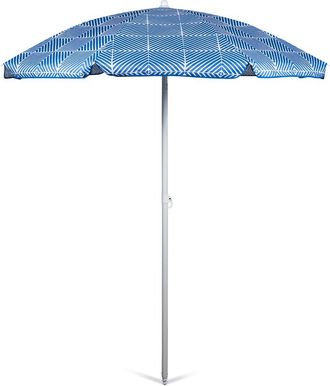
-33%
Oniva
Dnu Oniva 5.5Ft Portable Beach Umbrella
$34.99
$52.00
Rue La La

-30%
Ballard Designs
11 Patio Umbrella Replacement Canopy - Canvas Navy Sunbrella - Ballard Designs Dark Blue
$265.30
$379.00
Ballard Designs

-20%
Eglo
Eglo De Velde 2 Light Wall Light With Matte Nickel Finish & Metal Cage Shade
$69.99
$87.50
Rue La La

-30%
Ballard Designs
9 Patio Umbrella Replacement Canopy - Canvas Navy Sunbrella - Ballard Designs Dark Blue
$209.30
$299.00
Ballard Designs

-25%
Frontgate
7-1/2 Round Designer Umbrella - Resort Stripe Air Blue, Natural Teak - Frontgate Resort Collection
$1,049.25
$1,399.00
Frontgate

-20%
Ballard Designs
Extra 30 lb. Weight - Ballard Designs
$119.20
$149.00
Ballard Designs

-34%
Currey & Company
Block Print Drum Chandelier Shade Yellow
$45.99
$70.00
Rue La La

-60%
Ballard Designs
7.5 Round Patio Umbrella - Canvas Cornflower - Ballard Designs Blue
$178.39
$449.00
Ballard Designs
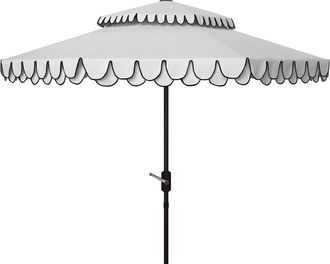
-50%
Safavieh
Elegant 9Ft Tabletop Umbrella
$199.99
$400.00
Rue La La
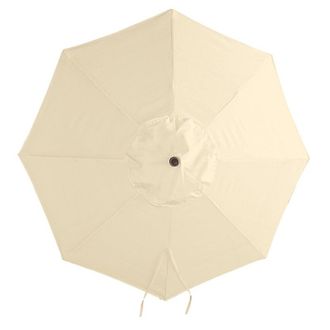
-60%
Ballard Designs
7.5 Round Patio Umbrella - Canvas Sand - Ballard Designs Beige
$178.39
$449.00
Ballard Designs

-29%
Safavieh
Ramona 9Ft Crank Umbrella
$189.99
$267.00
Rue La La

-30%
Ballard Designs
11 Patio Umbrella Replacement Canopy - Canvas Sand Sunbrella - Ballard Designs Beige
$265.30
$379.00
Ballard Designs
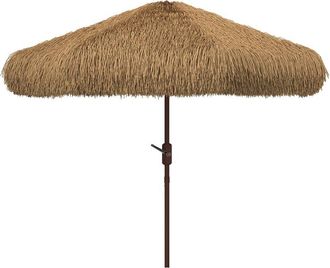
-39%
Safavieh
Indoor/Outdoor Nemery 11Ft Tiki Umbrella
$269.99
$441.60
Rue La La

-20%
Ballard Designs
Lottie Shade - Black - Large Black - Ballard Designs
$14.39
$17.99
Ballard Designs

-55%
Safavieh
Venice 9Ft Round Double Top Crank Umbrella
$179.99
$400.00
Rue La La

-20%
Ballard Designs
Rectangular Patio Umbrella - Canvas Fern Sunbrella, Bronze - Ballard Designs Blue
$599.20
$749.00
Ballard Designs
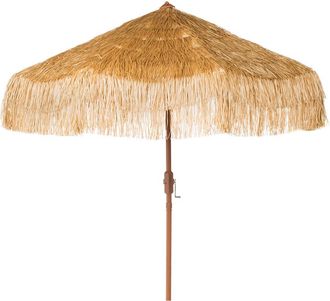
-44%
Safavieh
Tiki 9Ft Crank Outdoor Umbrella
$229.99
$408.00
Rue La La

-30%
Ballard Designs
11 Patio Umbrella Replacement Canopy - Canvas Black Sunbrella - Ballard Designs
$265.30
$379.00
Ballard Designs

-47%
Safavieh
Up Resistant Elegant Valance 9Ft Auto Tilt Umbrella
$164.99
$309.60
Rue La La

-20%
Ballard Designs
Steel Patio Umbrella Stand with Casters - Bronze - Ballard Designs Blue
$519.20
$649.00
Ballard Designs

-32%
Panama Jack
9Ft Patio Umbrella With Crank Orange
$99.99
$147.00
Rue La La

-30%
Ballard Designs
9 Patio Umbrella Replacement Canopy - Canvas Sand Sunbrella - Ballard Designs Beige
$209.30
$299.00
Ballard Designs

-51%
Safavieh
Indoor/Outdoor Solano Sunlounger
$252.00
$519.00
Rue La La

-60%
Ballard Designs
7.5 Round Patio Umbrella Replacement Canopy - Canvas Fern - Ballard Designs Green
$99.19
$249.00
Ballard Designs

-46%
Safavieh
Bassey 4Pc Living Set
$299.99
$552.00
Rue La La

-60%
Ballard Designs
7.5 Round Patio Umbrella Replacement Canopy - Canvas Cornflower - Ballard Designs Blue
$99.19
$249.00
Ballard Designs

-67%
Safavieh
Solano Outdoor Sunlounger
$254.99
$777.60
Rue La La

-67%
Safavieh
Solano Outdoor Sunlounger
$259.99
$777.60
Rue La La

-60%
Ballard Designs
7.5 Round Patio Umbrella Replacement Canopy - Canvas Sand - Ballard Designs Beige
$99.19
$249.00
Ballard Designs

-50%
Safavieh
Indoor/Outdoor Venice 6.5X10 Rect Umbrella Yellow
$149.99
$302.40
Rue La La


-42%
Safavieh
Tiana 9Ft Crank Umbrella Yellow
$159.99
$276.00
Rue La La


-40%
Safavieh
Milan Fringe 11Ft Umbrella Yellow
$199.99
$334.00
Rue La La


-48%
Safavieh
Indoor/Outdoor Milan 6.5X10 Rect Umbrella Yellow
$164.99
$314.40
Rue La La

-53%
Ballard Designs
Brumage Pink InsideOut Performance Fabric by the Yard - Ballard Designs
$25.59
$54.00
Ballard Designs

-40%
Safavieh
Elegant 9Ft Double Top Umbrella Yellow
$199.99
$334.00
Rue La La

-60%
Ballard Designs
7.5 Round Patio Umbrella - Canvas Navy - Ballard Designs Dark Blue
$178.39
$449.00
Ballard Designs

-53%
Safavieh
Milan 9Ft Dbletop Umbrella Yellow
$179.99
$386.40
Rue La La

-20%
Ballard Designs
Pacific Pagoda 8.5 ft Patio Umbrella with Fringe Edge - Canvas Navy Sunbrella - Ballard Designs Dark Blue
$1,039.20
$1,299.00
Ballard Designs
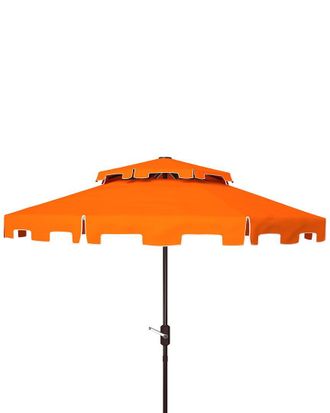
-54%
Safavieh
Zimmerman 9Ft Double Top Umbrella Orange
$169.99
$369.60
Rue La La

-20%
Ballard Designs
Rectangular Patio Umbrella - Canvas Black Sunbrella, Bronze - Ballard Designs
$599.20
$749.00
Ballard Designs

-46%
Safavieh
Bethany 9Ft Wooden Umbrella Orange
$169.99
$314.40
Rue La La


-42%
Safavieh
Elegant Valance 9Ft Umbrella Orange
$169.99
$291.00
Rue La La


-40%
Safavieh
Zimmerman 11Ft Market Umbrella Orange
$179.99
$298.00
Rue La La
This season’s trends
- Dolce & Gabbana sandals
- Ecco sandals
- Gray Nike shorts
- Straw hats for men
- Prada sandals for women
- Swim trunks for women
- Moschino sandals
- Gucci shorts for men
- Gucci sandals
- Linen shirts for men
- Dr. Martens sandals
- Nike summer shoes for women
- Skechers summer shoes for women
- Clarks summer shoes for women
- HUGO BOSS sandals
- Cargo shorts for women
- Nike summer shoes for men
- Off-white sandals
- Skechers sandals
- Skechers sandals for women
- Lee shorts for women
- Amiri shorts
- Clarks sandals for women
about products and deals
